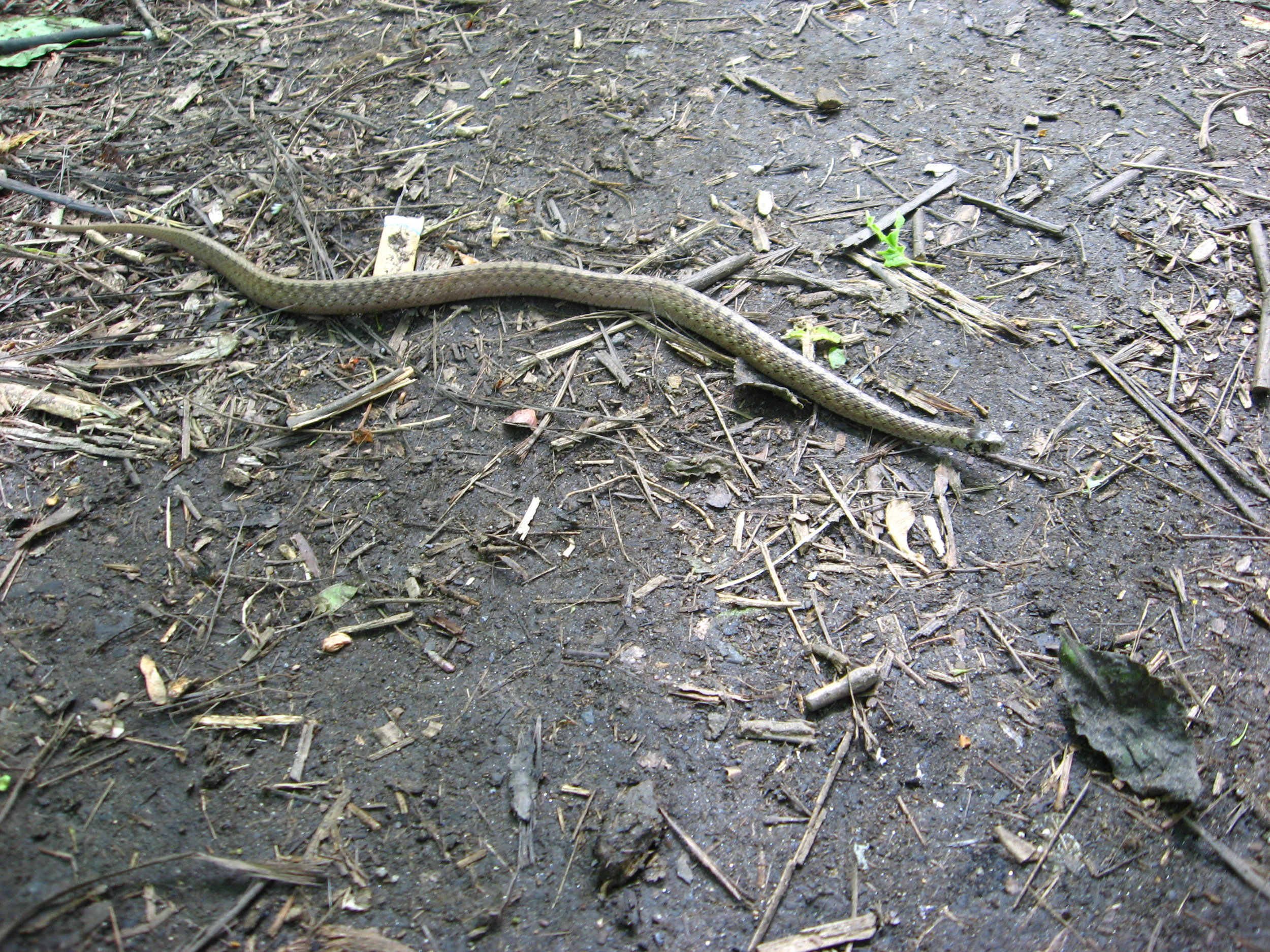Rough Earth Snake
Haldea striatula (formerly Virginia striatula), commonly called the rough earth snake, is a species of nonvenomous natricine colubrid snake native to the southeastern United States.
The species was first described by Carl Linnaeus in 1766, as Coluber striatulus. Over the next two and a half centuries its scientific name has been changed several times (see synonyms). Most recently, the generic name was changed back from Virginia to Haldea in 2013. Other common names for Haldea striatula include: brown ground snake, brown snake, ground snake, little brown snake, little striped snake, small brown viper, small-eyed brown snake, southern ground snake, striated viper, and worm snake.
The rough earth snake is found from southern Virginia to northern Florida, west along the Gulf Coast to southern Texas, and north into south-central Missouri and southeastern Kansas.
H. striatula is a small, harmless, secretive, fairly slender snake, 7-10 inches in total length (including tail). It has a round pupil, weakly keeled dorsal scales, and usually a divided anal plate. Dorsally, it is brown, gray, or reddish, and essentially has no pattern. Females are a little longer and heavier than males, with relatively shorter tails. Young individuals often have a light band on the neck, which is normally lost as they mature. The belly is tan to whitish and is not sharply defined in color from the back, unlike in the wormsnake (Carphophis amoenus) or the red-bellied snake (Storeria occipitomaculata). Keeled scales differentiate the rough earth snake from the similar smooth earth snake (Virginia valeriae), as well as from the wormsnake. H. striatula is most likely to be confused with De Kay's brown snake (Storeria dekayi), which is a little larger and is light brown with dark markings on the back and neck. Unlike the rough earth snake, De Kay's brown snake retains these markings into adulthood. Also, S. dekayi has a rounder snout than H. striatula.
The rough earth snake is fossorial, hiding beneath logs, rocks, or ornamental stones, in leaf litter, or in compost piles and gardens. The species is found in a variety of forested habitats with plenty of ground cover, as well as in many urban areas. It can reach very high densities in urban gardens, parks, and vacant lots.

By going on going on. CC BY-NC 2.0, via Flickr

By memily. CC BY-NC 2.0, via Flickr
